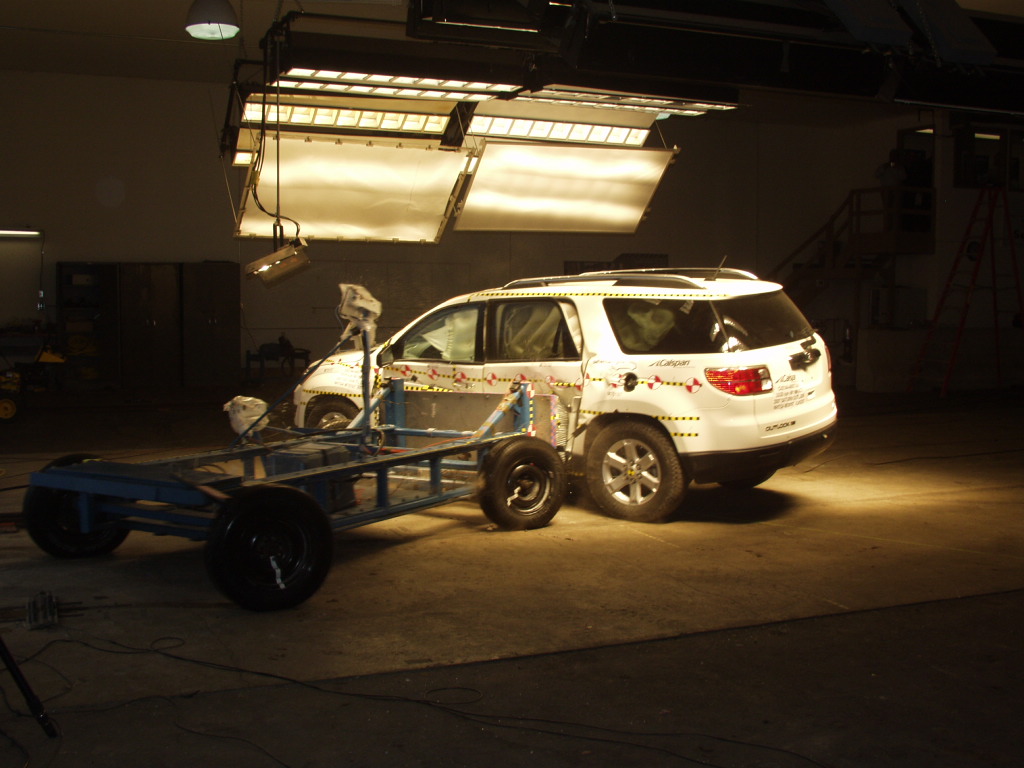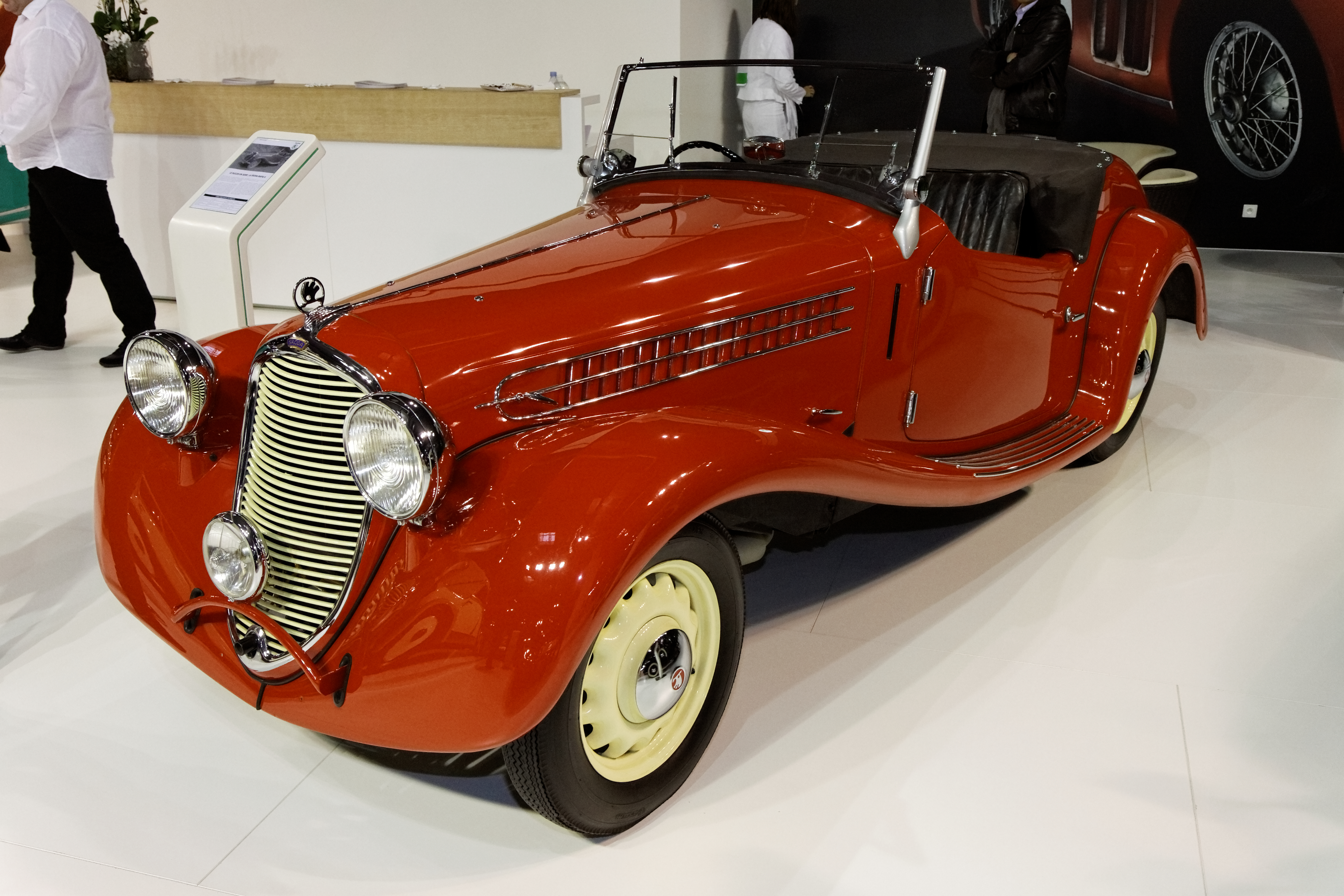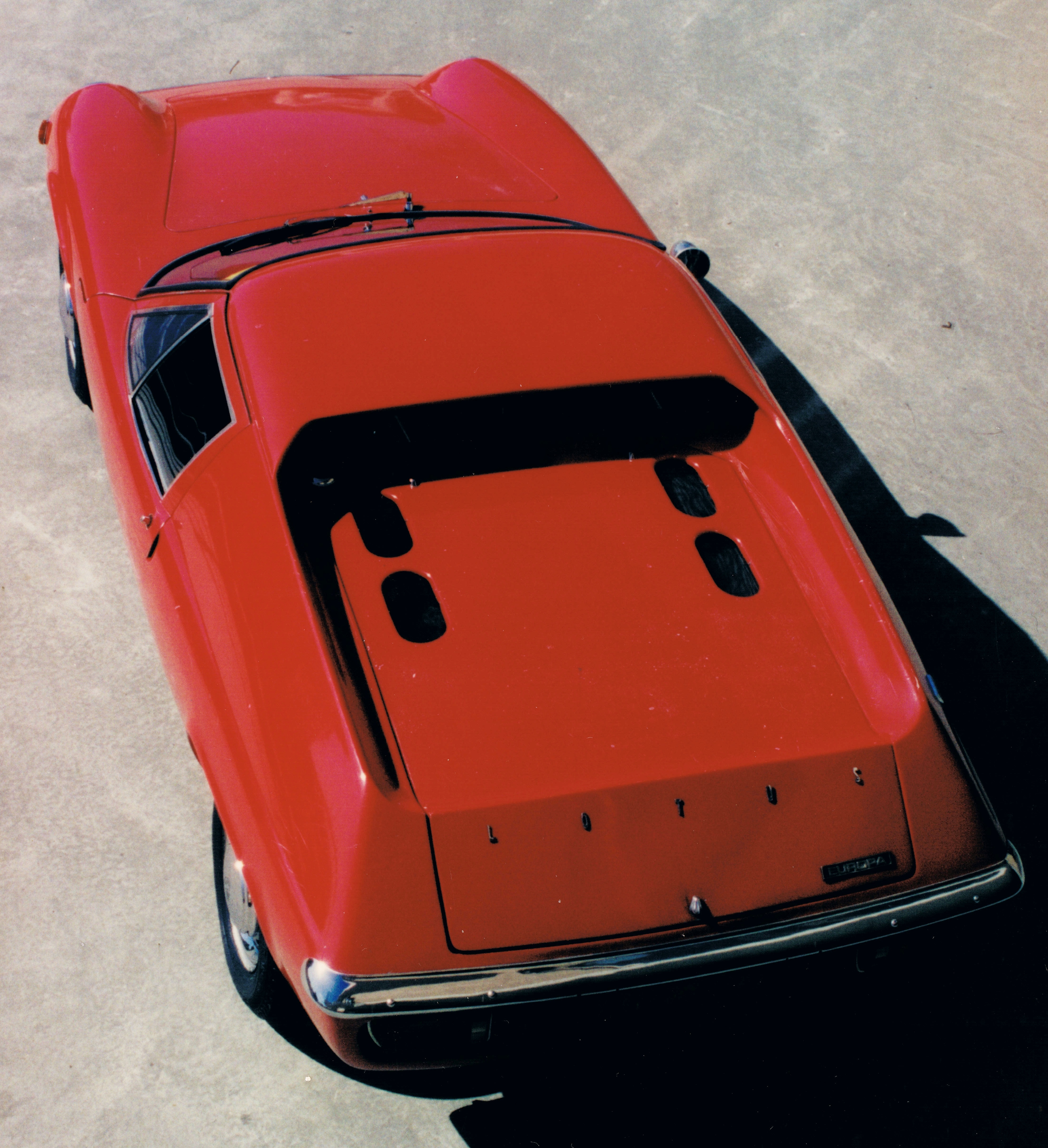|
Backbone Chassis
Backbone tube chassis is a type of automobile construction chassis that is similar to the body-on-frame design. Instead of a two-dimensional ladder-type structure, it consists of a strong tubular backbone (usually rectangular in cross section) that connects the front and rear suspension attachment areas. A body is then placed on this structure. It was first used in the English Rover 8hp of 1904 and then the French Simplicia automobile in 1909. The backbone chassis was extensively developed by Hans Ledwinka who used it in greater numbers on the Tatra 11 and subsequent vehicles. Ledwinka later used backbone frame with central tube and axles with swinging driveshafts on Tatra trucks, became known as ''Tatra-concept''. Design The truck backbone chassis is a design feature of Czech Tatra heavy trucks (cross-country, military etc.). Hans Ledwinka used this style of chassis for the Tatra 11 car in 1923. He then developed the design on trucks with 6x4 model Tatra 26, which had ex ... [...More Info...] [...Related Items...] OR: [Wikipedia] [Google] [Baidu] |
Side Collision
A side collision is a vehicle crash where the side of one or more vehicles is impacted. These crashes typically occur at intersections, in parking lots, and when two vehicles pass on a multi-lane roadway. Occurrences and effects For fatalities, in the United States, in 2008, a total of 5,265 (22%) out of 23,888 people were killed in vehicles which were struck in the side. For speed, in Europe in 2015, it is considered that best designed cars provide serious front crash protection with speeds up to 70 km/h for car occupants wearing seat belts in frontal impacts and 50 km/h in side impacts It is considered that passenger car fatalities and seriously injured side impacts account for about 35 to 40%. In most European countries, another stakeholder is involved in the side impact, with a rate between 45% and 66%. But side impact (22% to 29%) is less common that frontal impact (61% to 69%). For European motorcyclists, side impact is the second most frequent location of ... [...More Info...] [...Related Items...] OR: [Wikipedia] [Google] [Baidu] |
Tatra 97
The Tatra 97 (T97) is a Czechoslovak mid-size car built by Tatra in Kopřivnice, Moravia from 1936 to 1939. History The Tatra 97 was designed to complement two full-size cars in the Tatra range: the Tatra 77 launched in 1934 and the Tatra 87 launched in 1936 along with the Type 97. Each of the three models has an air-cooled rear engine and share similar aerodynamic fastback four-door sedan bodies. But whereas types 77 and 87 each have a large V8 engine, Type 97 has a flat-four engine. The Type 97 is distinguished by having two headlights and a one-piece windscreen, whereas the 77 and 87 have three headlights and a three-piece windscreen. The Type 97's flat-four engine displaces 1,759 cc and produces , giving it top speed of . Tatra already had a mid-size car in the same class, the more conventional 1,688 cc Tatra 75 that it had launched in 1933. Tatra continued to produce the Type 75 alongside the futuristic Type 97. In fact production of the Type 75 outlived that of the ... [...More Info...] [...Related Items...] OR: [Wikipedia] [Google] [Baidu] |
Tatra 87
The Tatra 87 (T87) is a car built by Czechoslovak manufacturer Tatra. It was powered by a rear-mounted 2.9-litre air-cooled 90-degree overhead cam V8 engine that produced 85 horsepower and could drive the car at nearly . It is ranked among the fastest production cars of its time. Competing cars in this class, however, used engines with almost twice the displacement, and with fuel consumption of 20 liters per 100 km (11.8 mpg). Thanks to its aerodynamic shape, the Tatra 87 had a consumption of just 12.5 litres per 100 km (18.8 mpg). After the war between 1950 and 1953, T87s were fitted with more-modern 2.5-litre V8 T603 engines. The 87 was used by Hanzelka and Zikmund for their travel through Africa and Latin America from 1947 to 1950. Design The Tatra 87 has unique bodywork. Its streamlined shape was designed by Hans Ledwinka and Erich Übelacker and was based on the Tatra 77, the first car designed with aerodynamics in mind. The body design was based on proposals s ... [...More Info...] [...Related Items...] OR: [Wikipedia] [Google] [Baidu] |
Tatra 77
The Czechoslovakian Tatra 77 (T77) is by many considered to be the first serial-produced, truly aerodynamically-designed automobile. It was developed by Hans Ledwinka and Paul Jaray, the Zeppelin aerodynamic engineer. Launched in 1934, the Tatra 77 is a coach-built automobile, constructed on a platform chassis with a pressed box-section steel backbone rather than Tatra's trademark tubular chassis, and is powered by a rear-mounted 2.97-litre air-cooled V8 engine, in later series increased to a 3.4-litre engine. It possessed advanced engineering features, such as overhead valves, hemispherical combustion chambers, a dry sump, fully independent suspension, rear swing axles and extensive use of lightweight magnesium alloy for the engine, transmission, suspension and body. The average drag coefficient of a 1:5 model of Tatra 77 was recorded as 0.2455. The later model T77a has a top speed of over due to its advanced aerodynamic design which delivers an exceptionally low drag coefficie ... [...More Info...] [...Related Items...] OR: [Wikipedia] [Google] [Baidu] |
Škoda Superb (1934–1949)
The original Škoda Superb is a full size luxury car that was made by the Czechoslovak car manufacturer ASAP, later AZNP from 1934 to 1949. It was the company's first car with a V8 engine and all-wheel drive. In 2001 Škoda revived the Superb model name for an unrelated model based on the Volkswagen Passat. Background ASAP introduced a new range of cars in 1930s that significantly differed from its previous products. A new design of chassis with backbone tube and all-round independent suspension was developed under the leadership of chief engineer Vladimír Matouš and derived from the one introduced by Hans Ledwinka at Tatra. First used on the 420 Standard in 1933, it aimed to solve the problem of insufficient torsional stiffness that was inherent with a ladder frame. The backbone chassis was the basis for the Popular, Rapid, Favorit and Superb models. While in 1933 Škoda had a 14% share of the Czechoslovak car market, behind both Praga and Tatra, the company's new mod ... [...More Info...] [...Related Items...] OR: [Wikipedia] [Google] [Baidu] |
Škoda Rapid (1935–47)
The Škoda Rapid is a mid-size car that was made in Czechoslovakia by Škoda from 1935 to 1947. Škoda had first applied the "Rapid" name to a version of its 1,195 cc Popular Type 920 made in 1934–35. From 1935, however, it transferred the name to a new, larger model. The Rapid Type 901 has a 1,386 cc sidevalve engine and was built 1935–38. It was succeeded by the Rapid OHV (Type 922) which has a 1,558 cc overhead valve engine and was built 1938–47. There was a six-cylinder sister model, the Škoda Rapid Six (Type 910), with a 1,961 cc engine, which was launched in 1935. In 1984 Škoda revived the "Rapid" name for the Rapid version of the Škoda 130. Since 2010 the company has used the name on a succession of models built in its factory at Pune in India. Concept In the 1930s Škoda introduced a new range of cars with a backbone chassis and all-round independent suspension. The backbone design was aimed to solve the lack of torsional stiffness in the ladder frame of pre ... [...More Info...] [...Related Items...] OR: [Wikipedia] [Google] [Baidu] |
Škoda Popular
The Škoda Popular is a small family car that was made in Czechoslovakia by Škoda Auto, Škoda from 1933 to 1946. It was the company's most affordable car at the time. Concept In the early 1930s Škoda introduced a new line of cars that significantly differed from its previous products. A new design of chassis with backbone chassis, backbone tube and all-around independent suspension was developed under the leadership of chief engineer Vladimír Matouš and derived from the one introduced by Hans Ledwinka in Tatra (company), Tatra. First used on model Škoda 420 Standard in 1933, it aimed at solving the lack of torsional stiffness of the Frame (vehicle)#Ladder frame, ladder frame. The new design of chassis became the basis for models Popular (845–1,089 cc), Škoda Rapid (1935–47), Rapid (1,165–1,766 cc), Škoda Favorit (1936–1941), Favorit (1,802–2,091 cc) and Škoda Superb (1934–1949), Superb (2,492–3,991 cc). In 1933 Škoda had 14% share of the Czechoslovak car m ... [...More Info...] [...Related Items...] OR: [Wikipedia] [Google] [Baidu] |
Lotus Europa
The Lotus Europa name is used on two distinct mid-engine GT cars built by British automobile manufacturer Lotus Cars. The original Europa and its variants comprise the Lotus Types 46, 47, 54, 65 and 74, and were produced between 1966 and 1975. The name was later revived in the Type 121 Europa S, a sports car based on the Lotus Elise produced from 2006 to 2010. Europa (1966–1975) By the mid-1960s, the mid-engine vehicle configuration was well-established as the optimal design for Grand Prix cars, however almost no road vehicles yet used this arrangement. Lotus planned the Europa to be a volume-produced, two-seater mid-engine sports coupe built to reasonable cost, quite an ambitious goal for the time. Like all Lotus vehicles of the era, the Europa was designed and built following Colin Chapman's oft-stated philosophy of automotive design: "Simplify, then add lightness". To this end, a number of ingenious design approaches were made by Lotus to allow it to economically overcom ... [...More Info...] [...Related Items...] OR: [Wikipedia] [Google] [Baidu] |
Lotus Esprit
The Lotus Esprit is a British sports car that was built by Lotus Cars at their Hethel factory in England between 1976 and 2004. It was among the first of designer Giorgetto Giugiaro's polygonal "folded paper" designs. Background In 1970 Tony Rudd, who had arrived at Lotus the previous year, proposed two new model development projects. The first, Project M50, resulted in the 1974 Elite. The second, Project M70, meant to develop a successor to the Europa which, like the Europa, was to be a two-door fixed-head mid-engine coupé. A meeting between Colin Chapman and Giugiaro was arranged in 1971 by designer Oliver Winterbottom, who also suggested that Giugiaro use his Maserati Boomerang concept as the inspiration for the new Lotus. Work began on the new car in mid-1971 with production of a 1:4 scale model. According to Italdesign, Chapman was disappointed with the wind-tunnel test results with the model and halted the project, but the Italian coachbuilder pressed on and built ... [...More Info...] [...Related Items...] OR: [Wikipedia] [Google] [Baidu] |
Lotus Elan
Lotus Elan is the name of two separate ranges of automobiles produced by Lotus Cars. The first series of cars was produced between 1962 and 1975 as a rear-wheel drive vehicle. The second series was produced between 1989 and 1995 as a front-wheel drive vehicle. Timeline The first range of cars (1962–1975) comprised: * Two seater sports cars: ** Lotus ''Type 26'' drop head coupé (DHC) marketed as the Elan 1500, Elan 1600, and Elan S2 (Series 2). ** Lotus ''Type 36'' fixed head coupé (FHC) marketed as the Elan S3, the Elan S4 and, lastly, in a higher performance model, the Elan Sprint. ** Lotus ''Type 45'' drop head coupé, replacing the Type 26, delivered in parallel with the Type 36 in S3, S4 and Sprint form. ** Lotus ''Type 26R'' racing version of the Type 26. * Four seater sports car (rear seats suitable for children): ** Lotus ''Type 50'', fixed head coupé, marketed as the Elan +2. After the S2 was released the original Elan 1500 and Elan 1600 models were typically refe ... [...More Info...] [...Related Items...] OR: [Wikipedia] [Google] [Baidu] |


.jpg)




